The East Asian Origins of the Fire Nation and Its Villains
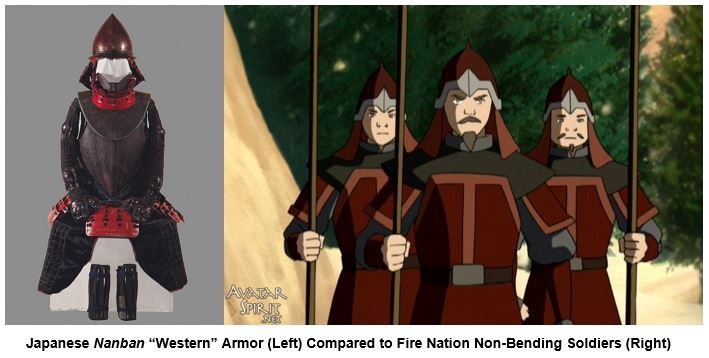
Introduction
Over the years, many volumes of fandom blood have been spilled from discussions concerning the Fire Nation’s main villains, Ozai and Azula. Paralleling this have been arguments over their relationships with Zuko, Iroh, Ursa, Mai, Ty Lee, with each other, even with themselves. Since Ozai and Azula are the figureheads of the Fire Nation that Zuko must peacefully restore the honor of, it is worthwhile understanding why people “like them” are considered proper leaders of the current Fire Nation.
Most of these discussions have sought to create “theories” that explain these characters as exclusively combinations of mental illness, personality disorders and various emotional traumas.
A couple examples of these discussions are the essays “Azula, the Embodiment of Jealousy and Neglect,” and “Three Pillars Theory of Azula.” These two essays are just examples, but they capture the widespread strategy the fandom has employed in trying to understand the motivations and goals of Ozai and Azula and their various relationships with the other characters. In addition, the shouting matches between Azula “fans” and “haters” also illustrates these discussions. Since the franchise has yielded so few hard answers, these importance of these discussions has not waned.
What these discussions focus on, as represented by those essays, are the characters’ apparent emotional problems, theoretical moral compasses and perceived inadequacies in the eyes of their families. Typically, the “lens” these discussions view these villains through is one that tries to relate them to present day spousal and domestic abuse narratives, namely as being both “abuser” and “victim” in a cycle of abuse that can be related to the modern, real world.
What these conversations do not provide are adequate explanations for how the historical, political, military and cultural aspects of the Fire Nation molded these military leaders. You would think that people with “Lord” and “Princess” in their names, who train daily for warfare and hand-to-hand combat, would make their responsibilities take center stage in their lives.
While there is a place for “nitty gritty” psychological examinations for understanding certain behaviors, trying to depict the Fire Nation villains as purely allegories of modern day domestic abusers, empathy deficient bullies and people afflicted by personality disorders eliminates Avatar’s most unique and defining characteristic: its East Asian origins.
You don’t need beautiful animation, martial arts-styled bending and immersion in a fantasy world to explain how families in the modern era can hurt their children for petty reasons. We have that in our own lives. We have friends and families who have experienced that. It can be addressed in any other setting. It can be addressed in Avatar but it doesn’t need Avatar to address it.
What we don’t experience in our modern lives is ancient China 2000 years ago, or feudal Japan after the takeover of the Tokugawa Shogun, or religious monks living in their temples in the mountains untouched by the modern world, and so on.
The setting of Avatar is one of both beauty and relative detachment from the real (and modern) world, but it is one that is based on a period of history and human civilization that most of Avatar’s audience (North America and Europe) have little exposure to. If the characters’ motivations are too detached from the fictional world in which they live (i.e. by ignoring the historical, political, military and cultural context), then you begin to lose the world’s depth. At the same time, if their motivations are too connected to the present world, then all Avatar is is a visual motif of ancient East Asia.
By seeking to explain the Fire Nation villains as embodiments of modern psychology’s understanding of “bad” people, you erase the opportunity to apply East Asia’s very real history of warfare, monarchical domination and oppressive cultures to a fictional world that is trying to say something about that warfare, monarchical domination and oppressive cultures. Note that the show did in fact achieve this with the Dai Lee’s corruption and manipulation of the Earth King; it depicted loosely the very real occurrence of Chinese Emperors being “kept in the dark” by their advisors so as not to interfere with the “real” governing of the states.
If your goal is to view Avatar purely as an allegory for modern dysfunctional relationships and domestic abuse, you lose Avatar’s uniqueness as a fictional dive into an East Asian-inspired world, especially one that is ravaged by warfare and feudalism.
In this article, I describe an alternative model for understanding the Fire Nation’s culture and history, and how its politics and military molded its heroes and villains.
What We Know and Might Know
In order to fill the gaps in our knowledge of the Fire Nation, we first have to understand what is both known about the Fire Nation and what can be reasonably presumed about it.
First, what do we know about the Fire Nation?
1. The Fire Nation is an archipelago with a history spanning thousands of years.
2. The Fire Nation was originally the “Fire Islands” and was not initially governed by a central power.
3. The Fire Islands had a unified cultural and religious authority in the form of the “Fire Sages”.
4. Eventually, the Fire Islands were unified by a single power—the “Imperial Government”—and afterward became known as the “Fire Nation”.
5. The Imperial Government is headed by a supreme ruler: the “Fire Lord”.
6. The Fire Lord is a hereditary monarch whose family is considered the “Royal Family”, both of which are separate entities from the Fire Sages.
7. The Fire Sages remain a distinct entity from the Imperial Government.
8. Both the Fire Lord and Royal Family are military and administrative rulers.
9. The Fire Lord and their Royal Family are not sacred and everlasting; their power can be “challenged” by rival leaders.
10. Fire Lords are expected to “show their worth” and be competent fighters in their own right; prowess in military arts and control of subordinates are valued traits.
11. Agni Kais are a longstanding component of Fire Nation culture.
12. The Fire Nation experienced an “unprecedented
time of peace and wealth” during the era of the Fire Nation, not during the era Fire Islands.
Next, what can be reasonably presumed given what we know?
Something necessitated the Fire Islands becoming unified, but this unification did not result in the Fire Sages taking power, nor did it yield a peaceful, democratic government.
The Imperial Government that resulted from this unification is rooted in military control and maintaining the fealty of its subjects; in Avatar and the Fire Lord, Sozin put on his “ruler persona” to Roku initially before acting friendly, only later to demand loyalty from him as if Roku was any other subject.
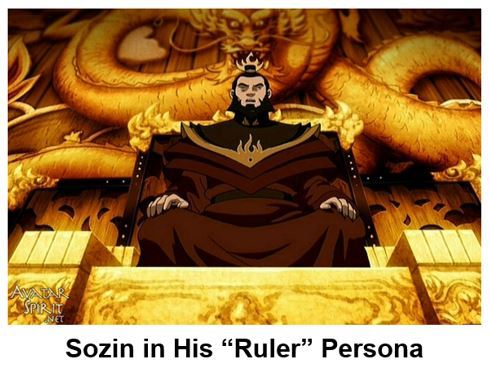
The culture of the Fire Nation values strength and bravery from its firebenders, as explained in an official description of Agni Kais. Presumably, the Agni Kai predates the era of the Fire Lord and has been used to settle disputes of various kinds. This could be interpreted as a “non-destructive” means of avoiding war and greater loss of life given how easily firebenders could wreak havoc to wooden buildings and crops (among other flammable components of society). Since nobody recognized Zuko on Ember Island in The Beach, despite his obvious scar, severe scars from burns must be common enough in the Fire Nation that a teen boy having one on his face is not horrifying nor particularly unattractive.

Presumably, the Fire Nation/Fire
Islands used to hold its religion and spiritual ties in higher regard, but
Sozin’s start of the war required this aspect of the Fire Nation to be
suppressed, as implied by dragon hunting and the divided loyalties of the Fire
Sages at Roku’s temple, and the fact that various generals and admirals have
defected. At the same time, vast enough swaths of the country and its
leadership did follow Sozin’s path, considering that he and his family
remained in power for over a hundred years. If Fire Lords can have their power
challenged, then either nobody tried to stop Sozin, or they were defeated. Azula’s comment about “rumors of plans to overthrow him
(Ozai)” in The Avatar State implies betrayal of the Royal Family is not a dormant threat. Though she was technically lying, it must have been a credible lie since neither Iroh and Zuko thought it was preposterous; his brother being “regretful” is what puzzled Iroh, not that there would be plots against the Fire Lord.
Notably, the Fire Lord’s throne room changed between the start of the war and the present day. Prior to Sozin, it did not have the imposing wall of flame as it does now. Certainly it had to be rebuilt after Roku destroyed it, but the wall of flame is much more imposing than the old.

The Fire Sages still pay a role in the Fire Nation, but this role is not known. Presumably, they play some part in the succession of the Fire Lord since they preside over coronation. Perhaps the relationship between the Fire Lord and Fire Sages is similar to the relationship between the Japanese Emperor and the Shoguns, where the Shoguns held the true power in the country (military and administrative) whereas the Emperor maintained a facade of power as a cultural and religious symbol. What is known about the Fire Sages is that they have a temple in the capital and are divided between their loyalties to the Avatar and the Fire Lord.
Finally, the Imperial Government’s capital is located in an isolated, fortified city inside a volcano’s caldera, where coming-and-going is strictly controlled. The city is large, full of nobility, physically disconnected from the external port city (versus directly being the hub of economic activity) and contains numerous underground bunkers.
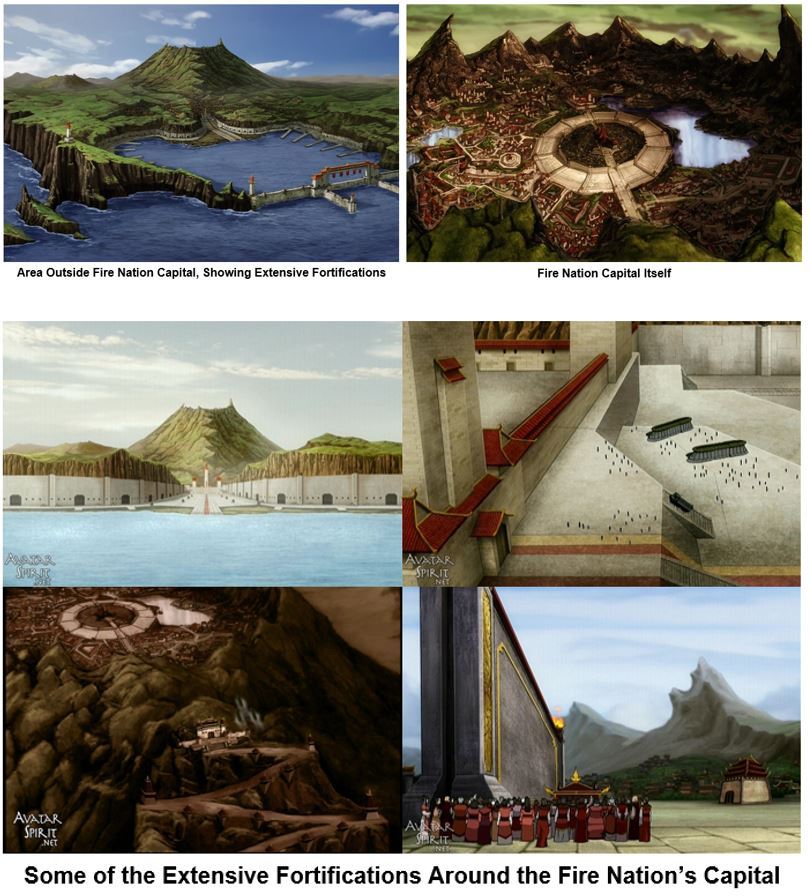
Why would the Capital require such extensive bunkers and fortifications? Presumably because the Fire Lord and Royal Family can be “challenged” and the bunkers are a defense mechanism against both external and internal threats. The Fire Nation did have a “darkest day” tied to solar eclipses, which suggests that the loss of firebending had profound military consequences. Whatever the reasons, the Imperial Government is so concerned about its survival that it has constructed massive fortifications around its capital, implying that warfare is a major concern.
Areas of Confusion
But what does all of this mean?
Was the Fire Nation previously peace-loving and compassionate while Sozin is responsible for all of its “evils”?
Have Agni Kais been performed for centuries and so Zuko being challenged to one was neither unusual nor particularly grotesque for the Fire Nation’s culture?
Did Sozin face massive opposition to starting the war or was everyone humbly obedient to the Fire Lord?
How is a Fire Lord’s rule challenged?
Why wasn’t Sozin overthrown if he had to “impose” the war upon the country?
Why did the Fire Lord come to existence in the first place?
Why has the Imperial Government not been replaced by the Fire Sages?
Why does the Fire Nation need a national government?
What is a more compelling explanation for the Fire Nation’s villains other than mental illness and personality disorders?
As it turns out, there is a way to
understand the Fire Nation that adequately fills in the gaps, explains its
heroes and villains and provides a lesson on East Asian history.
A Brief History of Ancient Japan’s Unification
The islands of Japan have been populated for tens of thousands of years, but the “modern” era of warlords and emperors did not begun until the past 1500 years or so. While the Japanese people were not united under a single state, there was an “Emperor” who was believed to have been descended from a goddess. Despite this first emperor having control over a certain portion of Japan, it did not take long until the country split into separate feudal states.
While the Emperor never went away, their power over the country waned. The real power in Japan laid in the hands of the various feudal lords (daimyo), who used their armies to defend their territories and capture new ones from other lords.
Since the Emperor represented a shared cultural connection among the people, their power was not completely absent. In the earlier parts of history, before the Emperor became completely subordinated, the Emperor would appoint a Seii Taishōgun, or supreme commander, of the Emperor’s armies. Eventually, this “supreme commander” became the actual ruler of the Japan since they controlled the military. By appointing them “shogun” they more or less had the public approval of the Emperor despite the Emperor not actually being able to control them.
Various shoguns came and went, but through it all were the daimyo using their samurai to battle for control of the country. Ruthlessness and murder were common. Building alliances only to later betray them were often wise tactics. For a thousand years, the rulers of Japan lived by the sword, died by the sword and used it to maintain their power. Things got particularly bad during the Sengoku Period, which is considered the “Warring States” period of Japan. That tells you all you need to know.

It was during this time that one of these feudal lords rose to power, a man named Tokugawa Ieyasu (first name Ieyasu, last name Tokugawa). Using a combination of political tact, military genius and European steel breast armor, he defeated all other daimyo during the Azuchi–Momoyama period and installed himself as the shogun of the Tokugawa Shogunate. This marked the end of over a thousand years of continuous violence and social turmoil in Japan.

The Tokugawa Shogunate represented Japan’s first unified national government. The country’s existing daimyo were placed under strict control to ensure they did not rebel. The military was nationalized and the existing feudal governments rearranged to ensure centralized control by the Shogun in his capital at Edo. Notably, Edo became modern day Tokyo.
National laws were written, along with cultural and religious standards to ensure social cohesiveness, stability and control. The economies of Japan also flourished, especially in the cities. A consequence of the Tokugawa Shogunate, however, was closing off Japan to the outside world. The Shogun wanted to ensure their rule and control of the populace. Allowing other countries to influence them and provide assistance to competing powers within the country was viewed as destabilizing.
A particularly unique aspect of the Tokugawa’s politic strategy was requiring the daimyos’ families to live in the capital while the daimyo themselves had to go back and forth between their homes in their territory (called a domain) and their homes in the capital every other year. The Shogun essentially held the daimyos’ families hostage to ensure they would not rebel or work against him, although they lived in the comfort and relative freedom of a modern city, not as actual prisoners.

Another tactic the Shogun utilized to quell rebellion was to keep careful control of who entered the city of Edo and its surroundings. Guards were at all entrances and major roads and registries were kept of all people. Essentially, if you weren’t suppose to be somewhere, you weren’t allowed to be there.

Bushdio also developed during this period as way of controlling the warrior class, and was much more complicated than most Western depictions. With war and feudal fighting no longer a constant threat, the samurai class became enforces for the new government. Naturally, the Shogun was particularly interested in controlling them.
Control is a common theme of the Tokugawa Shogun’s government.
The Tokugawa Period was one of peace and stability, prosperity and enjoyment of the arts, but Ieyasu Tokugawa was not a nice person. He hunted down and executed the families of rival clans, including kids, during the takeover. He held families hostage and made sure his subordinates feared him and never stepped out of line. He enacted strict laws to control the populace and made sure no one could challenge him and his government’s reign. And it worked. Japan did not experience another war until the end of the Tokugawa Shogunate 278 years later, when the Emperor regained control and ended the era of isolationism. There’s a reason why modern day Japan doesn’t view this period with derision and loathing; given the context of the time, it was a proud moment for a region racked by warfare and division.
A pattern is beginning to emerge: an island nation ruled by feuding lords with no central power to direct them; a religious and cultural figure with no real power; a period of intense warfare and turmoil followed by a lasting period of unification and prosperity; a powerful central government headed by a hereditary monarch who took power using ruthlessness and military might; a hereditary monarch who rules through fear and demands fealty; a capital city with strict control of who comes and goes.
Themes of control and subordination from a central power.
This is sounds very familiar.
The Military and Political History of the Fire Nation
The history of ancient Japan provides a real-world model for understanding the origins of the Fire Nation’s Imperial Government, the Fire Lord and why they rule through fear and military domination. Keep in mind that the Fire Nation is not Japan, but warfare, centralized control and a desire for peace and stability are universal. Ancient Japan’s experience with feudalism, warfare and the eventual peace that came from having a competent central authority can go a long way in applying Avatar’s “East Asian origins” to the Fire Nation and its villains and heroes.
Using the rise of the Tokugawa Shogunate as a template, the history of the Fire Nation looks like this:
The Fire Islands were ruled by various feudal lords. These feudal lords engaged in warfare with each other as they vied for ever increasing control. Firebending was the primary source of these lords’ military might. The Fire Sages were recognized as spiritual and religious leaders by the Fire Islands people, but they did not have the practical power necessary to enforce peace upon the lands.
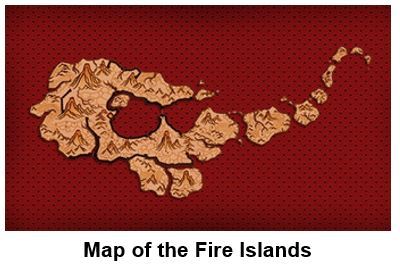
At the same time, firebending was recognized as being fundamental to the influence of the Fire Sages and the power of the feudal lords. Since fire can destroy houses, burn fields, melt iron and lay waste to non-bending armies, whoever can control and weaponize firebending for their own purposes will attain the most power. On the other hand, this also makes warfare particularly destructive as even small rebellions could lay waste to cities given how much fire a single firebender can unleash.
At some point, in order to put a stop to the fighting, a central authority came to power, either as one of those warlords or a Fire Sage acquiring enough military and political power. Maybe an avatar helped them. Without a doubt, military might had to have played a role in ending the “Warring States” period of the Fire Islands.
In order to make sure the Fire Islands did not fall back into fighting and remained peaceful and stable, this new central authority created a sweeping national government to control them. Thus are the beginnings of the Fire Lord and Imperial Government.
Because the Fire Nation is full of people with ”desire and will, and the energy and drive to achieve what they want” (in the words of Uncle Iroh), the destructive capacity inherent to a nation full of firebenders must be kept under strict control; if the goal is to create a prosperous, flourishing society, you cannot allow it to be destroyed periodically by walking flamethrowers.

As a result, the Imperial Government is not a “friendly” entity. It controls the nobility and lords who act as the local “vassals” in their home territories; it amasses a large, overwhelming military to quash any attempts at rebellion, and to send a clear message to its people to not even try; it uses fear and threats of violence to control the people who might feel the “drive and willpower” to try their hand at acquiring wealth and power through force.
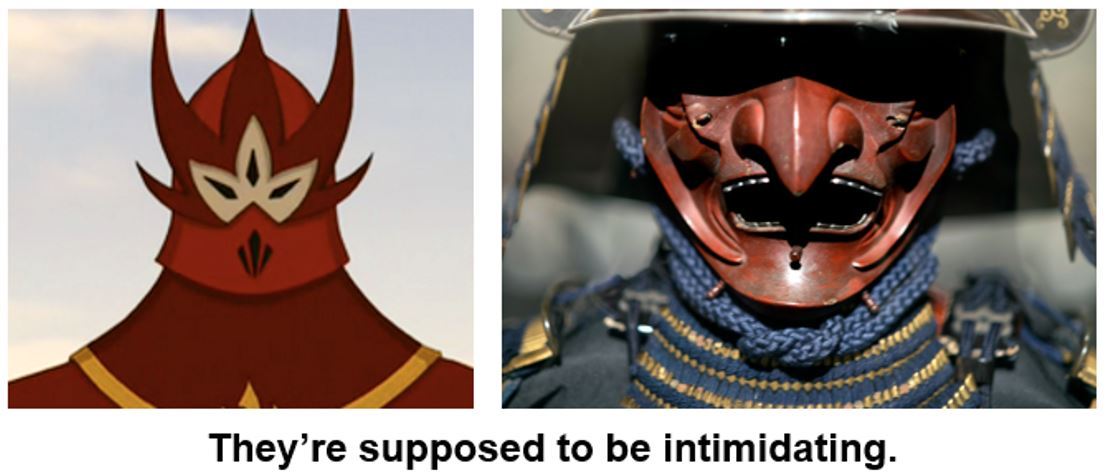
The Agni Kai exists as a means of settling conflict without the destructive consequences of firebending. Perhaps a Fire Lord enacted this to further tamp down on firebenders’ destructive tendencies. It may also be an example of how the Fire Nation’s “warrior class” handles internal disputes in a similar manner as bushido.
Bravery, ferocity and a willingness to fight are valued in the leadership of the country because the Imperial Government is supposed to be a military entity first; how can the Fire Lord, their family and government inspire fear in the people if the people don’t believe they will be crushed if they step out of line?
At the same time, since the Fire Nation is much smaller than the Earth Kingdom, the Fire Lord must ensure they can defend the Fire Nation from invasion; you need a large, devoted, competent military to go up against an enemy multiple times your size.
In order to further control the country, the Fire Lord requires the families of the lords and nobility to live in the closed-off, guarded capital inside the caldera in a similar manner as the Tokugawa Shogunate required. This is why the capital is so guarded and closed-off, yet beautiful and comfortable; it is both a defensive measure for the administrative officials and a means of holding the nobility “hostage”.

The Fire Lord and Royal Family views themselves as presiding over, and maintaining the peace and stability of the Fire Nation. Their responsibility is to ensure that the peaceful Fire Nation does not fall back into the chaotic Fire Islands. Being nice and democratic is not their means of achieving this; making sure everybody subordinates themselves to the Imperial Government is.
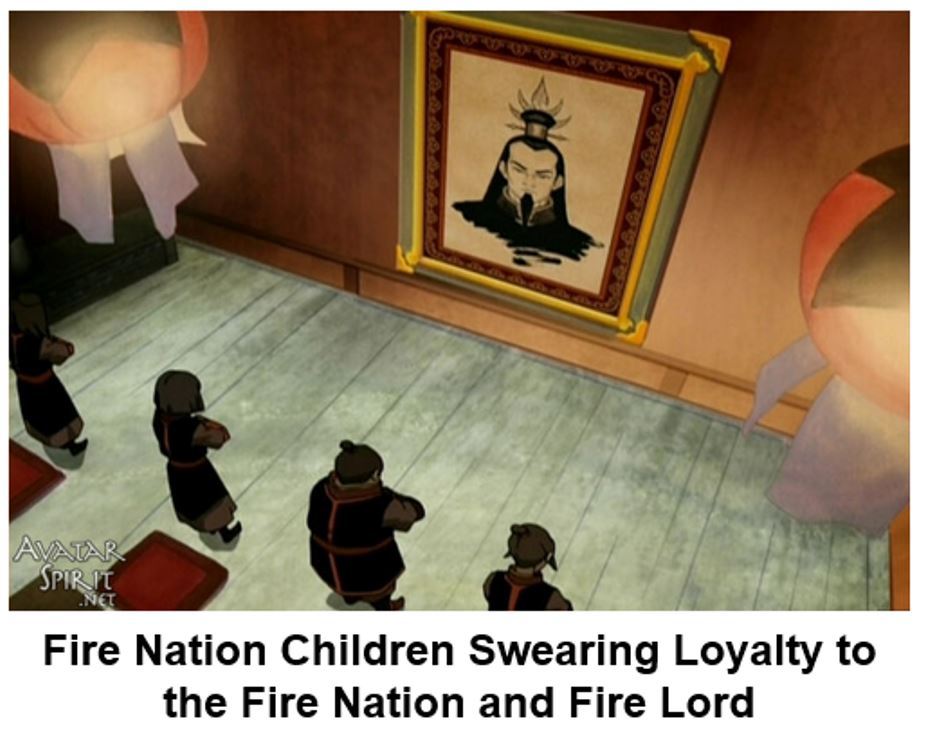
After hundreds of years of peace and an unprecedented era of prosperity, the Fire Nation began to lose its internal enemies. The lords and nobility were under full control. The Imperial Government was vast and efficient. Nobody was trying to invade the Fire Nation. Everyone was happy and proud of their culture and government.
This allowed Sozin to begin looking outward. Using the all-powerful Imperial Government apparatus developed over the centuries, plus the sweeping loyalty to it ingrained into the public, he was able to get the country to go to war against the world. The militarism inherent to the Fire Nation’s leadership was not crafted out of whole cloth but simply cranked up and sent down a dark path.
The military being so willing to go along with it was because of their inherent loyalty to the Imperial Government and their culture of aggression and lust for battle necessary for warriors. This is actually where the 20th century Imperial Japan connections come in, but that’s a separate topic.
In summary, the Fire Lord and Royal Family view themselves as stewards of the peace and order of the Fire Nation. They see their responsibility as doing whatever it takes to prevent the “bad old days” from returning and that the Fire Nation is never weakened by foreign invaders. They rule through coercion and fear in order to ensure a country full of people who can shoot fire out of their hands remain subservient to the Imperial Government’s will. They embrace a culture of fighting because their primary goal is to prevent fighting by deterring those who might want to try.
An Alternate View of the Fire Nation’s Villains
Viewing the Fire Nation’s culture, government and leadership through the lens of Japanese history paints a more coherent picture of the Fire Nation’s villains, versus the M.C. Escher-like theories that result from focusing entirely on mental illness and personality disorders.
Look at it like this: the Fire Lord demands fealty and obedience from the people yet Azula’s emphasis on controlling people through fear is a result of Freudian Excuses and personality disorders?
No way.
Ruling through fear and coercion is necessary from the viewpoint of a soldier-princess who is supposed to command obedience from subjects, or else.
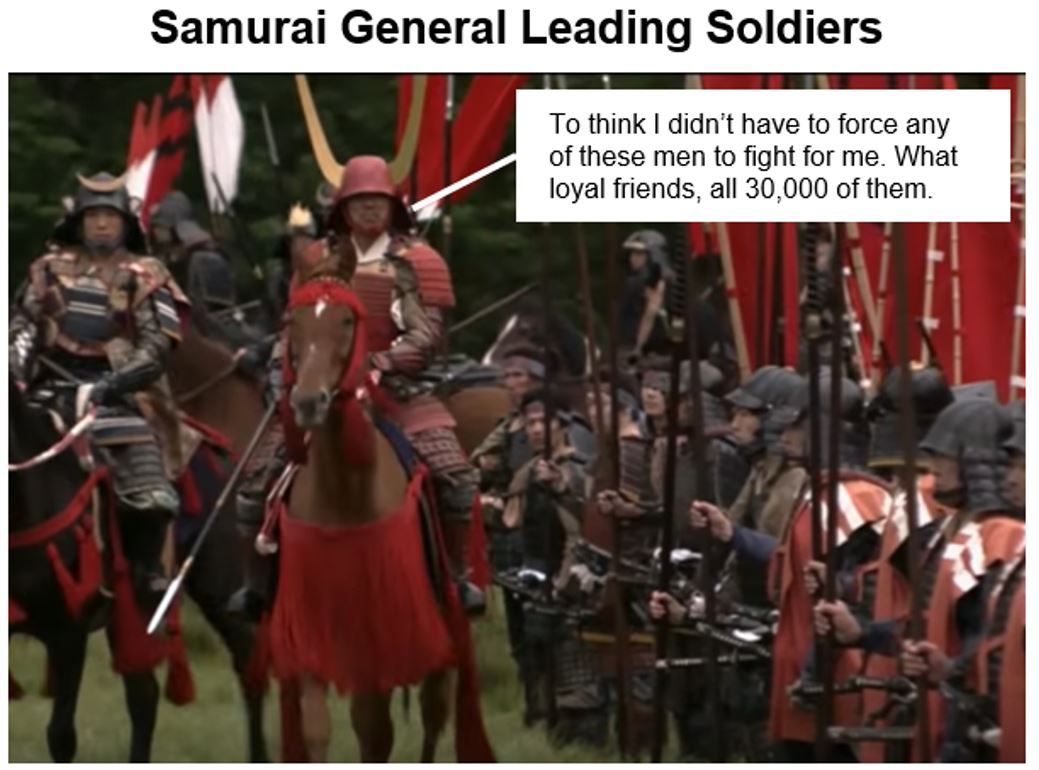
Agni Kais are expected events in Fire Nation culture, so common that child-Zuko is perfectly happy to face the general over mere “disrespect”, but the Fire Lord challenging his son to one is uniquely out of line? It’s awful, I mean, really awful, but it’s not out of line and it says a lot about the ingrained culture of the Fire Nation; Ozai didn’t think it would be viewed as shameful by everyone watching. Keep in mind that the tale of the 47 Ronin started with one member of the nobility insulting the other (essentially) and being asked to commit suicide simply for drawing a weapon inside Edo Castle (strictly forbidden). If Ozai can have his power challenged as any other Fire Lord can, then nobody was willing to oppose him because everyone else supported him.
Iroh spends a lifetime invading the
Earth Kingdom, no doubt killing tens of thousands, and he can joke about burning
Ba Sing Se to the ground? Of course he can, because it’s what Fire Nation
generals do and part of the terrible culture that must be changed, as horrible
as it was. The prince-general is supposed to be a military leader and
enjoy what he does. He better not be squeamish.
Zuko is expected to be “loved and adored” for having firebending talent, courtly manners (to quote official descriptions of Azula) and intelligence in a similar fashion as his prodigal, early-blooming sister? Yes, because she bloomed early as the type of princess the nobility and leadership want and expect. It’s unfortunate they were so hard on Zuko, but now we know why he wasn’t “adored” like his sister; she was what others wanted Zuko to be.
Ty Lee is strong-armed by Azula into leaving the life she loves, even having her life threatened, when Ty Lee is a family member of the nobility that the Imperial Government seeks to control? Of course she is strong-armed. Can you really imagine this scenario playing out:

Those lines are taken from the show. Sounds a lot different, doesn’t it? Ignore the smirking and smugness for a moment and think about what is actually happening: a supreme military leader and heir to the throne is bullying a subordinate in order to get what they are entitled to; unwavering loyalty from a subject. Doesn’t make it good. Doesn’t make Ty Lee’s fear and loathing of Azula any less justified, but it puts it in a much more relevant context than vague theories of sadism and personality disorders. It also tells us something about the real ancient world: this how military rulers in East Asia’s history behaved and now you’re getting to see it in a fictional setting.
Fire Lord Azulon orders one of his sons to execute their son? That’s bad. Really bad. Did you also know that Ieyasu Tokugawa ordered his own son to commit suicide over suspicion he was conspiring against him? He didn’t want to but those were the wishes of the lord he was working with to win the war. That’s really bad too, and not shocking for the era, unfortunately. The leaders of the ancient world valued human life a lot less than people do now. It’s sad they didn’t value it more.
Manipulating subordinates (i.e. playing them off each other) and being ruthless were not frowned upon, but legitimate tactics. Murder and backstabbing were useful means of getting rid of an opposing leader. What mattered was winning, and the blood on your hands could simply be washed off, and if people didn’t like you for it? Well, were they in charge?
None of this is “good”. None of this is moral, or righteous, or anything close to how people should act in the modern era. However, these were not kleptocratic dictators like we see around the world today. These were legitimate administrative rulers by their day’s standards, and we (you and me) will never truly know what they were feeling when they woke up in the morning with the responsibilities of warfare and politicking.
We will never be able to completely relate to what these ancient leaders did. Do you know what it’s like to be the law in the land who can order people to commit suicide, and who will do it? Do you know what it’s like to prosecute a political and military war against multiple opponents across a vast country? Do you know what it’s like to manage an ancient authoritarian government after hundreds of years of warfare and chaos? None of us will, but that’s the kind of situation that a fictional country like the Fire Nation can take inspiration from, and should take inspiration from.
These were
all very real problems of the ancient world and problems which Avatar, as a
fictional work, can allow us to explore in the safety and comfort of not
actually having to be there (and without having to open up huge history books).
Summary
The Fire Nation’s political and military history can be modeled on ancient Japan’s, in particular the rise of the Tokugawa Shogunate, where the Fire Lord represents the shogun and the Fire Sages the emperor.
The Fire Nation capital is both the head of the administration and home to the nobility’s families, who are held as hostages (in comfort) to prevent the various lords from rebelling.
The Royal Family and Imperial Government rules through fear and threats of force because they have to keep a country full of walking flamethrowers in line.
As military leaders who can have their power challenged, firebending talent and military prowess are highly valued and necessary for Fire Lords. At the same time, the rest of the country’s leadership wants leaders who appear worthy of that power and authority, hence those who have all the right qualities (Azula) are viewed in higher regard than those who have less (Zuko).
Azula’s emphasis on using “fear to control people” is not a psychological hang-up but a natural tactic of the Fire Lord, military, and Imperial Government to maintain obedience; as a teenager with limited life experience, she has internalized her role as a princess and warrior to the detriment of her personal relationships and emotional maturity (this is where the “child soldier” narrative has relevance).
Ozai represents the pinnacle of self-interest, authoritarianism and militarism that the combination of Sozin’s War and the longstanding nature of the Imperial Government have combined to create. In the ancient world, lords waged warfare for two reasons: to acquire power or pre-emptively wipe out rivals. Ozai wants power.
Ozai challenging Zuko to an Agni Kai is awful but not unusual, hence why he felt he could do it at all. Agni Kais are a fundamental aspect of conflict resolution in the Fire Nation, most likely because the Fire Nation’s leadership values bravery and a willingness to fight very highly. As Zuko was a prince and future leader of the warrior class, those values applied to him as well, but they got applied to him far too young (again, this is where the “child soldier” narrative has relevance).
And finally, by modeling the motivations of the Fire Nation’s villains and heroes on the military leaders of ancient Japan, you have the opportunity to learn about and critique that ancient society while also giving it a fictional flare.
As a final remark on applying the history of ancient Japan to the Fire Nation, the Tokugawa Shogunate ended when the Emperor forcibly took control of the Tokugawa government in order to end the forced isolationism. If ancient Japan hadn’t been pressured to adapt to more advanced European civilizations (say, if it existed in a vacuum) then the Tokugawa Shogunate might have continued to be the longest and most stable period in Japanese history; post-World War 2 Japan is only 70 years old while the Tokugawa Shogunate lasted for 278. When the Emperor wrested control of the country from the Shogunate, there was already enough peace, stability and government bureaucracy in place to lead a rapid transition of the country into modernity. That was the ultimate value of the Tokugawa Shogunate.
If the Fire Islands had not unified under a central authority, then they might have never industrialized so rapidly during that “unprecedented time of peace and prosperity” and may have eventually been conquered by the Earth Kingdom (should an EK conqueror have found a way of killing the Avatar, or taking advantage of their absence).
Conclusion
Think about ancient Japan for a moment. All of the warring lords. The conquest and ruthless political maneuvering. The ruling through fear and totalitarian control. What is a more reasonable explanation for the behavior of that society: mental illness and personality disorders, or universal concepts of ancient nation-building?
What makes more sense for furthering Avatar’s East Asian themes in terms of the Fire Nation: sociopathy, personality disorders, lack of fundamental human qualities, petty bullies and insecure abusers? Or universal concepts of ancient nation-building in the context of people who can shoot fire out of their hands?
Was Ieyasu Tokugawa suffering from a personality disorder? Was ancient Japan swimming with people who lacked fundamental human traits? That would be and absolutely extraordinary anomaly of human genetic variation.
When discussing the evils of the Fire Nation, you have to start with the in-world context that created them, and in order to understand that context, you have to apply some East Asian history. Why “decent” or “normal” people end up doing terrible things is a question as old as humanity itself and should not be erased from Avatar.
In order to understand why Ozai and Azula seem like “bad” people to us, it’s because the rulers of ancient Japan acted like bad people. Zuko can’t be soft and fumbling. Azula can’t let people say no to her. Iroh can’t abandon the siege with no consequences. Ozai can’t let Zuko refuse to fight. As bad as many of these things are, they are driven by the fact these people are the most powerful entities in their country and must show their fire-wielding subordinates that they deserve their power and should not be challenged. There is no room for weakness, only strength and competence.

When you resort to psychological theories or genetic anomalies to explain the Fire Nation’s villains, you erase the opportunities to tie the Fire Nation to critical elements of East Asian history, namely the rise and success of the Tokugawa Shogunate. By relating the main villains of Avatar to the very real “villains” of the ancient world, you preserve the East Asian themes that make Avatar unique and informative to a Western audience and help shed light on what drove them to be what they were.

